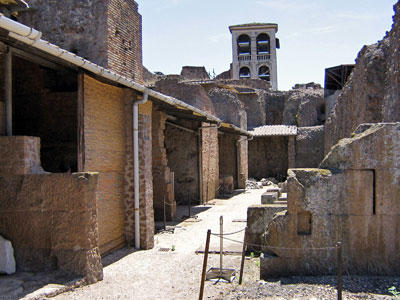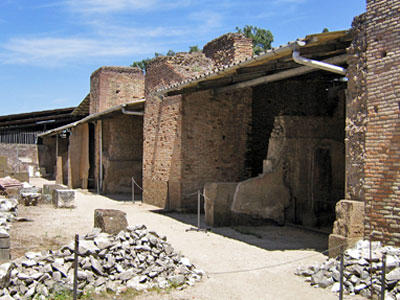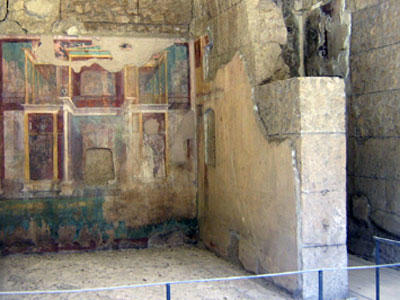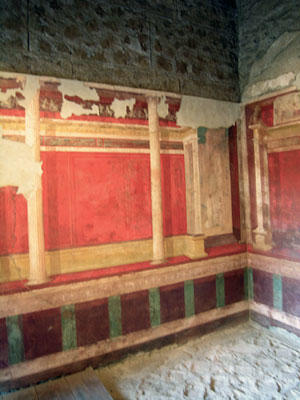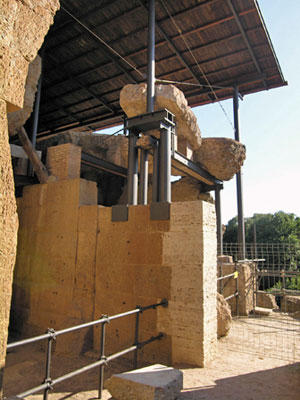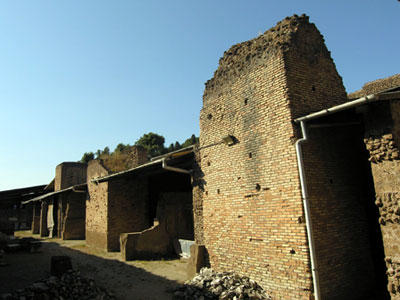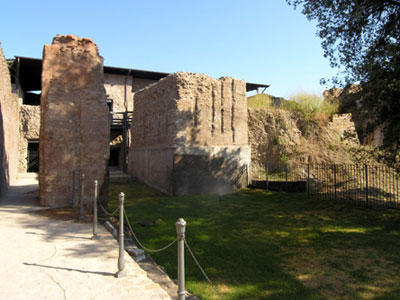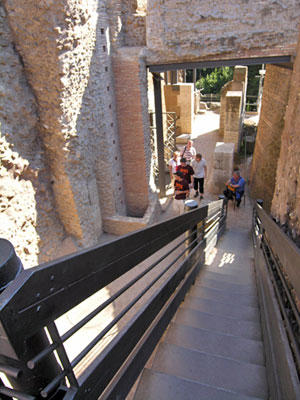House of Augustus
Background
The home of Rome’s first emperor sits atop the Palatine Hill in the heart of the ancient city. Augustus originally obtained the property from an orator named Hortensio, and, when he defeated Sextus Pompeius in the battle of Nauloco in 36 B.C., the senate had it rebuilt. Augustus expanded the layout after his victory at Actium, redesigning it to associate it with the nearby temple of Apollo, his patron god. Augustus lived in the house, an assortment of contained rooms on two stories, from 63 B.C. to A.D. 14. Its painted decoration ranks among the best in the Roman world. Intact designs cover the walls, painted in a style similar to second Pompeian, with thin architectural elements and the use of perspective. The rooms containing the most spectacular wall paintings are known by their recurring motifs: stanza delle maschere (room of the masks), the stanza dei pini (room of the pines), and the stanza delle prospettive (room of perspective).
How We Helped
The House of Augustus was discovered by archaeological excavations in the 1960s and, since then, exposure to harsh weather, pollution, and biological organisms has caused serious deterioration of the painted surfaces. Continued water infiltration posed the biggest risk to both the structural and decorative elements within the ruins. The Sorprintendenza Archeologica di Roma created a comprehensive restoration and management plan for the site, which included installing protective roofing, stabilizing the structure, conserving the wall paintings, and designing a visitation route through the house with lighting and information panels. WMF supplied a grant in 2008 to contribute to this colossal effort. Managed by the Sorprintendenza, WMF funding was used to conserve the wall paintings, returning them to vibrant color, and identify surviving floor mosaics. At the time, the condition of the original flooring was only partially known due to years of accumulation, and intact mosaics existed in several rooms and the inner courtyard. The House of Augustus opened to the public in 2008.
Why It Matters
The House of Augustus is symbolic of a crucial transition in Roman history, when the Palatine transformed from a residential plateau into the seat of imperial power. The layout, wall paintings, and mosaics illuminate the life of the emperor and provide information about the contemporary Roman period. The building itself holds immense archaeological, political, and artistic significance that can now be seen by visitors every day, thanks to decades of conservation work. The restoration of the House of Augustus is part of a long-term plan to reinvigorate the entire Palatine Hill.

